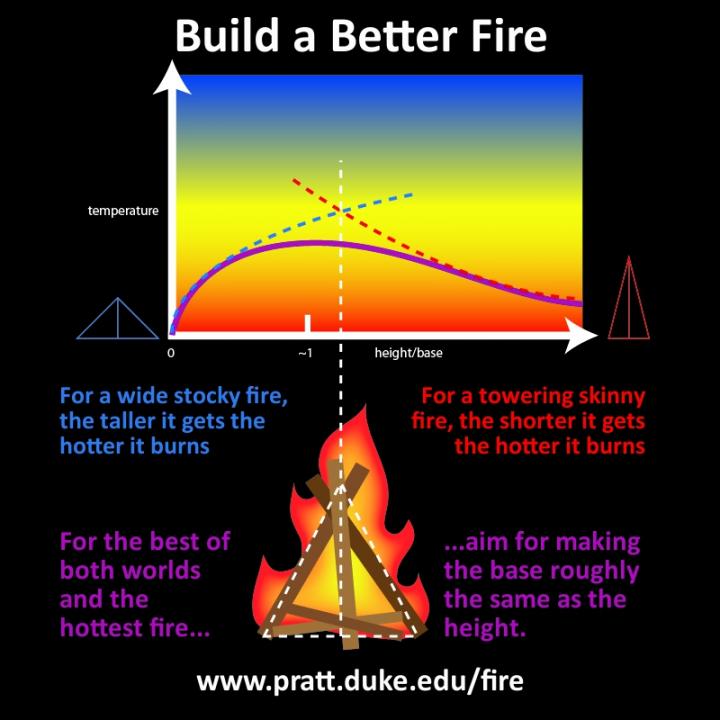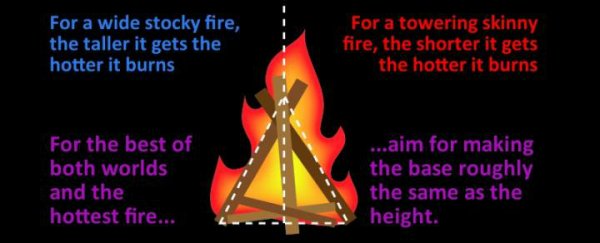If you're in the great outdoors one of the essential skills required for survival is being able to get a fire going, and now an academic from Duke University in the US has published a guide to the perfectly designed campfire. Professor of Mechanical Engineering Adrian Bejan says you need to build a pyramid that's roughly as wide as it is tall - so most of us have already been working along the right lines.
Bejan applied the pioneering and previously established Constructal Law to come up with the magic formula, and says successive generations and different races have built fires to these requirements because it works so well. Wide fires burn hotter the taller they are, while skinny fires burn hotter as they grow shorter, which means the sweet spot as far as temperature goes is somewhere in the middle.
"Humans from all eras have been relying on this design," said Bejan in a press release. "The reason is that this shape is the most efficient for air and heat flow. Our success in building fires in turn made it possible for humans to migrate and spread across the globe heat flow from fire facilitates the movement and spreading of human mass on the globe, which is a direct prediction of the Constructal Law."
Published in 1996, Bejan's Constructal Law states that nature evolves into states that allow for the greatest flow, be it a tree, a river bed or a current of air. The law is now being applied by design and manufacturing companies to create more efficient systems - and it appears it also applies to putting up fires on your campsite or patio too.
"Our bonfires are shaped as cones and pyramids, as tall as they are wide at the base," added Bejan. "They look the same in all sizes, from the firewood in the chimney, to the tree logs and wooden benches in the centre of the university campus after the big game. They look the same as the pile of charcoal we make to grill meat. And now we know why."
Bejan's findings have just been published in Nature Scientific Reports and the professor now wants to move on to investigating the effects of wind, the type of materials and the way they're packed together on the quality of a fire: once those variables have been established, we really will know how to create the perfect fire.

